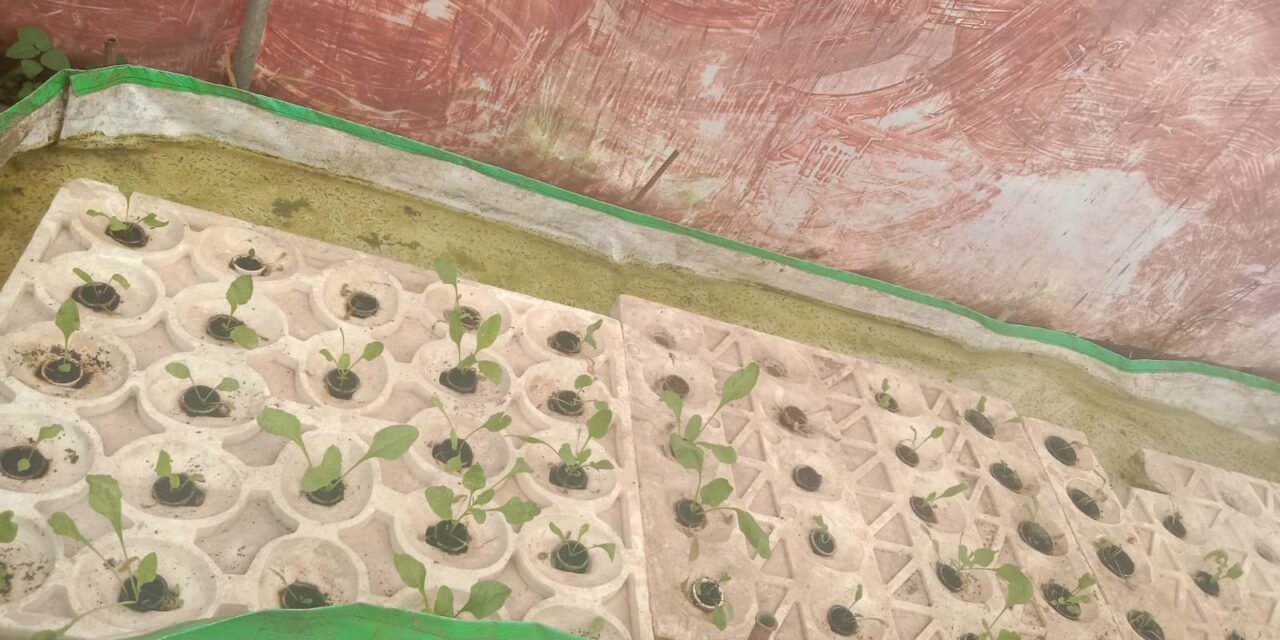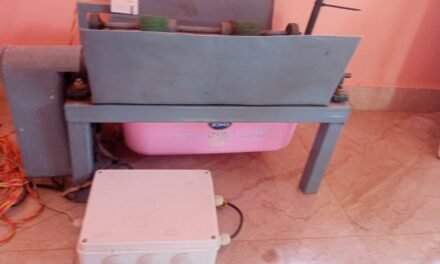Introduction:
The term Hydroponics comes from the Greek words hydro (water) and ponos (labor). It is a soil less growing technique that utilizes a nutrient and water solution in place of the nutrients that a plant extracts from soil.
Types of Hydroponics:
1. Wick System
2. Water Culture
3. Ebb and Flow (Flood and Drain)
4. Drip System
5. N.F.T. (Nutrient Film Technology)
6. Aeroponic Systems.
Deep water culture (DWC) is a hydroponic method of plant production by means of suspending the plant roots in a solution of nutrient-rich, oxygenated water. Typically, DWC is used to grow short-term, non-fruiting crops such as leafy greens and herbs.
Need of the Project:
Toilet wastewater is the main source of nutrients in household wastewater, and the major fraction of nutrients is found in urine . At least 80% of the nitrogen, 55% of the phosphorus, and 60% of potassium in domestic wastewater originate from urine, and it only occupies less than 1% of the total wastewater volume. In order to maximize nutrient recovery from wastewater, urine should be separately collected and processed.
Objectives:
- Collection of urine.
- To study circulation of water after predetermined period in the system.
- To observe growth of spinach in DWC hydroponics system by using urine.
Process Flow Chart:

Procedure:
1/08/2022 to 6/08/2022
I sowed the seeds of spinach in trays and after some growth, I will transplant that spinach into DWC system.

Levelled the land and done the setup of the DWC bed.


Collection of Material:
- Beds
- Drip laterals
- T-joints
- Cups/Netpots
- submersible pump
- Timer
- Oxygen bubbler.
Bill of Materials required:

ALGORITHM OF ARDUINO CODE:

CODE OF ARDUINO:
void setup() {
Serial.begin(9600);
pinMode (7, OUTPUT); // Set pin 7 to output
}
void loop() {
digitalWrite(7, HIGH); // Set pin 7 as “high” or turn it on
Serial.println(“Relay on”); // prints that the pump should be on
delay(7200000); // 2 hours delay
digitalWrite(7, LOW); // Set pin 7 as “low” or turn it off
Serial.println(“Relay off”); // prints that the pump should be off
delay(7200000); // another 2 hours delay
}
8/08/2022 to 20/08/2022
In this week, I collected the materials required for the project. I cutted pipes and done connected pipes by using elbows. Filled water in the DWC bed. Also learned about Arduino, learned connection of arduino, relay to the water pump. Done coding required for my project in arduino by using Arduino IDE software. Then I joined the water pump with the pipe and connected arduino, relay to the water pump.


After completing the connections, I filled water in the bed and transplanted spinach in the DWC bed.


21/08/2022 to 28/08/2022
There was a problem in arduino coding and hence in the circulation of the water in the system. So, I started continue circulation of water.

I discussed with Dr. Dixit about the project that what is the composition of the urine and how can we get nitrogen from urine. Also, discussed in which form the nitrogen is taken by the plants.
29/08/2022 to 04/09/2022
Refilled water in the DWC hydroponics bed.
Referred the blog of Soham Sunthankar about study of addition of urine to the hydroponics system.
(https://vadic.vigyanashram.blog/2021/03/02/urine-wastewater-treatment/)
12/09/2022 to 18/09/2022
For Organic DWC, I started collecting urine. So, kept approximately 50 lit drum for urine collection.

19/09/2022 to 25/09/2022
Addition of urine:
Due to sunlight, algae was grown in the DWC bed. So, removed the algae from the water and cleaned the water from the bed. Then refilled the DWC bed with fresh water. Collected approximately 50 lit of the urine and added nitric acid to urine to maintain the pH of the urine in the range of 1-3 and also for reducing the odour of the collected urine. Diluted the urine by 1:4 ratio and added MBBR in the ratio of 1:8 to the diluted urine. Added 5 lit of BARC culture. Also, added the sugar as a carbon source in 1:4 ratio.
Why to add Nitric acid: A lot of ammonia could be lost via volatilization. To stop this from happening acidification with nitric acid, sulphuric acid, phosphoric acid with proper dosage to keep the pH at such a level where the urease enzyme responsible for decomposition of urea could be inhibited, will be adopted.

12/10/2022
After 3 weeks, removed the MBBR from the bed and transplanted the spinach in the system.

13/10/2022 to 18/10/2022
Taken readings of pH, EC and TDS.
28/10/2022 to 5/11/2022
Refilled the water in the bed. Taken height of the plants.
OBSERVATIONS:
pH = 6.7
EC = 2553
TDS = 1276
Average height of the plants:
1) Average height of the plants= (9.5+8+15.8+14.8+13)/5
= 12.22 cm
2) Average height of the plants = (13.2+23.3+21.4+22.5+21.5)/5
= 20.38 cm

6/11/2022 to 13/11/2022
In this week, I taken height of the plants. Measured pH, EC and TDS of the water. Refilled the bed with new water.
OBSERVATIONS:
pH = 6.5
TDS =828
EC = 1657
Average height of the plants = (26+20.6+27.8+32+35.5)/5
= 28.28 cm
CONTENTS OF BARC CULTURE: For 200 litres of BARC Culture 2 kg jaggery is added with 100 g of urea. I added 5 lit of BARC Culture so it contains 50 g jaggery and 2.5 g urea.
Plants has encountered with magnesium deficiency. So, I sprayed MgSO4 on the leaves of the spinach.


14/11/2022 to 20/11/2022
In this week, I measured the TDS, pH and EC of the water. Also, harvested the spinach which weighed 858 gm.

Observations:
With comparison with Chemical based DWC hydroponics we got following data,
After 15 days
| Parameters | Humidity | Temperature | Average height of plant (cm) | Average length of leaf (cm) | Average width of leaf (cm) |
| Chemical DWC | 63 | 25 | 9.4 | 3.24 | 5.80 |
| Urine DWC | 65.2 | 25 | 12.22 | 4.18 | 7.72 |
After 30 days
| Parameters | Humidity | Temperature | Average height of plant (cm) | Average length of leaf (cm) | Average width of leaf (cm) |
| Chemical DWC | 72 | 24 | 20.86 | 6.08 | 14.04 |
| Urine DWC | 79 | 27 | 28.38 | 8.88 | 11.72 |
After 40 days (While Harvesting)
| Parameters | Humidity | Temperature | Average height of plant (cm) | Average length of leaf (cm) | Average width of leaf (cm) |
| Chemical DWC | 63 | 25 | 22 | 9.67 | 13.74 |
| Urine DWC | 65.2 | 25 | 30.43 | 10.5 | 12.09 |
Conclusion:
- The average plant height, average plant length, average leaf sizes are higher in urine based DWC hydroponics system as compared to Chemical fertilizer based DWC hydroponics.
- The average leaf width is more in chemically grown spinach than the spinach grown on the urine.
- In comparison between Urine and Chemical fertilizers, on the weight basis the spinach grown on urine has higher weight than that of chemically grown spinach.
- Urine based DWC Hydroponics system have 41% yield more than that of Chemical DWC hydroponics.





